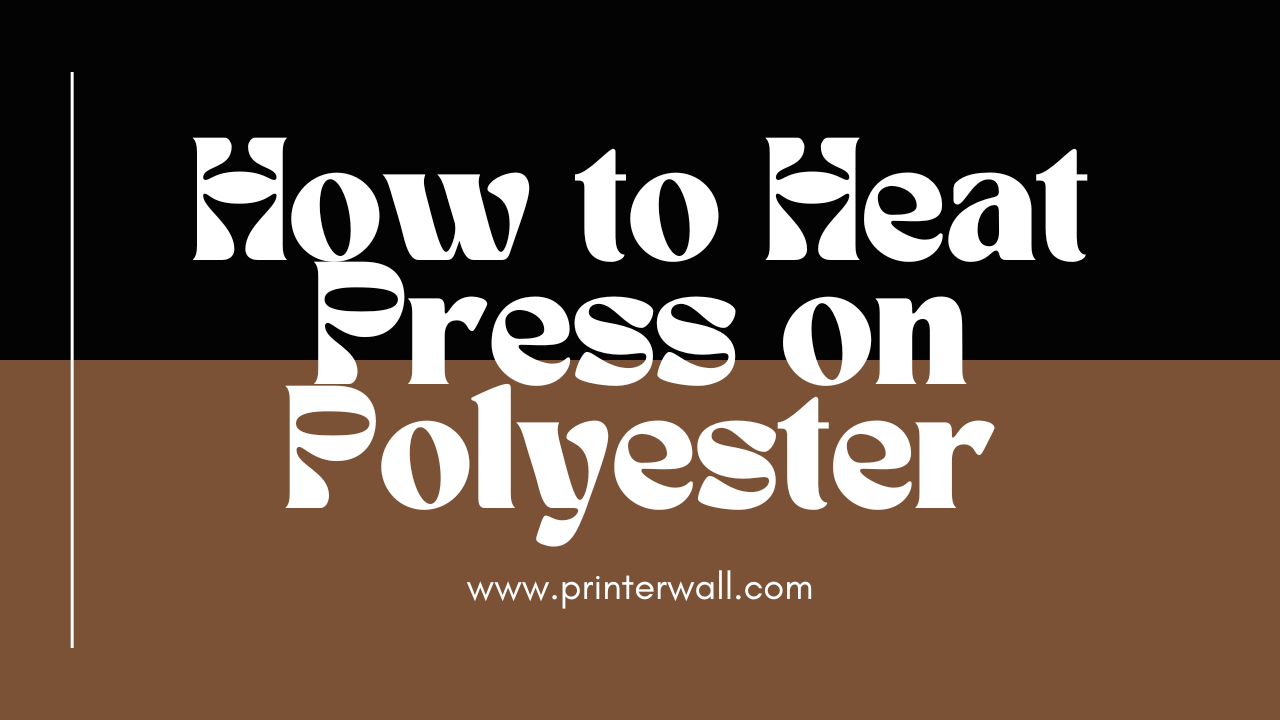Heat pressing on polyester can be a great way to create vibrant and professional-looking designs. It can be used to transfer images onto polyester material, such as t-shirts, sweatshirts, and bags. In this article, we will discuss the steps necessary to properly heat press on polyester. From finding the right temperature to using the correct pressure, we will provide you with all the tips and tricks to make sure your heat-pressed designs turn out perfect every time.
Preparation to Heat Press on Polyester
Gather Supplies
In order to heat press on polyester fabric, you will need to gather the following supplies: a heat press machine, a heat press transfer, a Teflon sheet or parchment paper, and a pressing pad or towel.
Prepare Polyester Fabric
Before you begin heat pressing on polyester fabric, you must prepare the fabric. Start by pre-washing the fabric and ironing it on the wrong side with a warm, dry iron. Once the fabric is pre-washed and ironed, place it on a flat, heat-resistant surface. Place the heat press transfer on the fabric and cover it with the Teflon sheet or parchment paper. Place the pressing pad or towel on top of the Teflon sheet or parchment paper.
Heat Pressing
Heat pressing is a great way to add designs and patterns to polyester fabric. It is an easy process that requires a few simple steps to complete. In order to heat press on polyester, one will need a heat press, polyester fabric, and whatever design or pattern they would like to add.
Set Heat Press Settings
The first step to heat pressing on polyester is to set the heat press settings. Depending on the type of polyester fabric being used, the temperature and pressure settings will need to be adjusted accordingly. Generally, the temperature should be set between 320-350 degrees Fahrenheit with a pressure setting of medium-firm.
Place Fabric in Heat Press
Once the heat press is set, the fabric should be placed in the heat press. Make sure the fabric is centered and smooth before closing the press and beginning the process.
Press Fabric
Once the fabric is in the press and the press is closed, the pressing process can begin. It is important to press the fabric for an appropriate amount of time in order to ensure the design or pattern is properly applied. For most heat press designs, the fabric should be pressed for 15-20 seconds. After the fabric is pressed, it should be allowed to cool before being removed from the press.
Tips for Heat Pressing on Polyester
Heat pressing is a popular technique used to create apparel, signage, and other customized materials. It involves applying a heated surface to the material, which allows for a permanent transfer of a design or pattern. Polyester is a well-known material used for heat pressing, as it is strong, lightweight, and durable. However, heat pressing on polyester requires some special considerations. Here are some tips for heat pressing on polyester:
Adjust Temperature for Different Types of Polyester
Polyester comes in a variety of different types, from polyester-cotton blends to polyester-spandex blends. Each type of polyester will have its own optimal temperature for heat pressing, so it’s important to check the manufacturer’s instructions for the exact temperature setting. Generally, polyester blends should be pressed at a lower temperature than pure polyester, so it’s important to adjust accordingly.
Remove Wrinkles Before Heat Pressing
Wrinkles can cause uneven heat transfer when heat pressing on polyester, resulting in a poor quality finish. To ensure a smooth finish, it’s important to remove any wrinkles from the material before heat pressing. This can be done by steaming or ironing the material before heat pressing.
Use Heat Resistant Teflon Sheets
When heat pressing on polyester, it’s important to use a heat resistant teflon sheet between the heated surface and the material. This will help to protect the material from any scorching or melting, as well as prevent the design from transferring to the back of the material. It’s also important to make sure the teflon sheet is large enough to cover the entire area being heat pressed.
Most Related Article: How to Heat Press Hats
Conclusion
Overall, heat pressing on polyester is a great way to make a unique and long lasting design for your clothing. With the right equipment and knowledge, heat pressing on polyester is both straightforward and quick. With the proper supplies and techniques, you can make your own unique creations that will stand up to the test of time. Whether you’re making custom designs for yourself or as a gift for a special someone, heat pressing on polyester is the best way to make sure your design is as unique and long lasting as possible.
Frequently Asked Questions
What is the ideal temperature for heat pressing polyester?
The ideal temperature for heat pressing polyester is around 320°F – 330°F.
What type of heat press should I use for polyester?
A standard heat press is suitable for heat pressing polyester.
How long should I press polyester for?
The time you press polyester for should depend on the type of polyester you are using and the thickness of the material. Generally, it should take around 10-15 seconds.
Is it necessary to use a pre-heat press for polyester?
Pre-pressing is not always necessary, however it can help to create a better bond between the fabric and the transfer.
How should I store my heat press?
Your heat press should be stored in a cool, dry place and should be covered when not in use to prevent dust and dirt from collecting.
